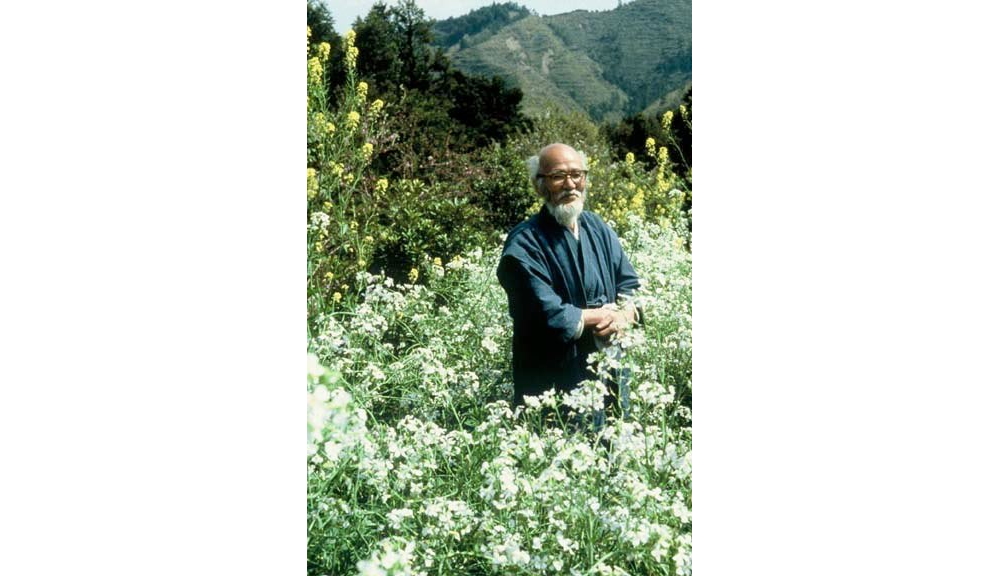Japanese Natural Farming - Introduction
Japanese Natural Farming - Introduction
(Original French version here)
Translated into French over a decade ago already, “Révolution d’un seul brin de paille : Une introduction à l’agriculture sauvage” (in English: “The One-Straw Revolution: An Introduction to Natural Farming”), followed a few years later by “Agriculture Naturelle” (in English: “The Natural Way of Farming: The Theory and Practice of Green Philosophy”) introduced the French public to Japanese natural agriculture/farming (in Japanese: shizen-nōhō 自然農法) and, subsequently, to the notion of alternative agriculture in the Land of the Rising Sun. Written by Fukuoka Masanobu (福岡正信 1913-2008) in 1975, the book is now so popular in France that one expert on the subject has elevated Fukuoka to the rank of one of the four pillars of world alternative agriculture, alongside Steiner, Howard and Mollison. [cf. note 1]

However, even if the book’s success in France helped to open the eyes of a great many people in the organic/alternative agriculture community to the existence of Japanese natural farming, it’s influence was not exclusively positive. In fact, “Révolution d’un seul brin de paille : Une introduction à l’agriculture sauvage” made such an impression that many of it’s readers lost all perspective of both Japanese natural farming methods in particular and Japanese alternative agriculture in general. Despite the importance of Fukuoka’s book, it is a sad fact that, even today, virtually all knowledge that the French have of Japanese alternative agriculture is resumed in only two books — both written over forty years ago and translated not directly from the original Japanese, but from secondary English translations — marred by a number of mis-translations (starting with the title, which should have been translated “agriculture naturelle”, and not “agriculture sauvage”).
In an attempt to correct this situation and, I hope, gain sufficient interest in the subject to warrant translations of other books into French, I have decided to write a small series of articles intended to present Japanese natural farming as a whole — with the work of Fukuoka Masanobu in its proper cultural and historical context — and to address some of the errors concerning the techniques, along with the widely spread notion that natural farming and permaculture are one and the same thing.
Once I’ve done that, I would like to continue by presenting (in another series of articles) two other forms of alternative agriculture which are becoming more and more common in Japan: permaculture and aïgamo “duck farming.” But for now, here is a summary of the articles on Japanese natural farming:
- 01 Okada Mokichi and the Sekaï Kyūseï-kyō and Shinji Shumeï-kaï religions
- 02 The Descendants of Fukuoka
Kawaguchi Yoshikazu
Takeuchi Atsunori - 03 The Techniques
No cultivation (tagayasanaï 耕さない)
No fertilisation (hiryō o ataenaï 肥料を与えない)
No weeding (josō shinaï 除草しない)
No pesticides (nōyaku o shiyō shinaï 農薬を使用しない)
No rotation (rensaku 連作)
Seed saving (jika saïshu 自家採種) - 04 Do-nothing
- 05 Common Points and Differences with Permaculture
- 06 Conclusion
- 07 Bibliography
note 1. “Les agricultures alternatives sont l'agriculture biologique de Sir Albert Howard, la permaculture de Bill Mollison, la biodynamie de Rudolf Steiner et l'agriculture naturelle de Masanobu Fukuoka.” (“The alternative agricultures are Sir Albert Howard’s organic farming, Bill Mollison’s permaculture, Rudolf Steiner’s biodynamics and Masanobu Fukuoka’s natural agriculture”) Olivier Barbié, Abrégé d’Agriculture Naturelle, p. 20
When he's not obsessing over heritage varieties of vegetables & herbs, chasing off wild deer or otherwise running around the fields of his mountain farm, he's trying to beat the system, taking photos or trying to better understand cryptocurrencies.
You can find his Steemit introduction here
You can find out more about his farm here: @potager-cerfs
I hope you will share some insights on what Masanobu-san called seed balls. What did he use as binding? Which types of seeds did he mix?
@noganoo fucks his cousin! It's disgusting!!!
What a wonderful write up! Thank you for sharing:)
That was quick ;).
You seem full of langauges. Very impressive dear Nick.
About this article: Until now I did not know about the existance of the wider Japanese natural farming where Fukuoka was embedded and stay very curious about your upcoming articles about that.
Also "duck farming" was unknown to me, caught my attentiona and will be researched.
Sincerily yours.
Moritz
Well, I do speak Japanese and French as well, but this was only a very short article so that's why I was so quick. I think the following articles will be a lot slower... As for duck farming, it seems to be practiced in the Camargue region of France: I have found a number of videos detailing French farmers successfully using the techniques.
Nice post thanks for sharing....
Thanks for opening my eyes: I was completely unaware of this work. Chances are his books will have been translated (here in Taiwan) into Chinese.
Please do also include links to material in French (text or video).
Resteemed to promote discussion!
Thank you! I'll be publishing the bibliography at the end...
Kindly follow back and upvote my posts please...